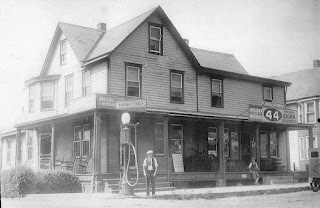The Joseph Ball House, Part 2

The Joseph Ball House In the last post , we took a look at the 19th Century history of what I call the Joseph Ball House, located in the parking lot of the Arundel Apartments northwest of Milltown. The little, stone, two-story house doesn't look like much, but I think it dates back well over 250 years and connects to an important early family in Mill Creek Hundred. The chronology may have been a bit confusing in the previous post, so here is how I believe the ownership/residency of the house went in the 1800's. At the start of the century, it was owned by Joseph Ball, whose son James may have worked the farm with him. After Joseph's 1821 death, James lived here for two years until his death in 1823. James' widow Isabella then had the house until her own passing in 1831. At this point the house went to John Ball, whose relationship to Joseph we'll look at later in the post. When John died sometime in the 1850's, the house went back to James' son, James W. Bal...






